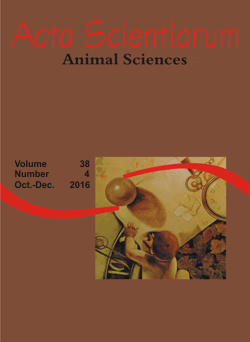<b>Comparison of whole genome prediction accuracy across generations using parametric and semi parametric methods
Abstract
Accuracy of genomic prediction was compared using three parametric and semi parametric methods, including BayesA, Bayesian LASSO and Reproducing kernel Hilbert spaces regression under various levels of heritability (0.15, 0.3 and 0.45), different number of markers (500, 750 and 1000) and generation intervals of validating set. A historical population of 1000 individuals with equal sex ratio was simulated for 100 generations at constant size. It followed by 100 extra generations of gradually reducing size down to 500 individuals in generation 200. Individuals of generation 200 were mated randomly for 10 more generations applying litter size of 5 to expand the historical generation. Finally, 50 males and 500 females chosen from generation 210 were randomly mated to generate 10 more generations of recent population. Individuals born in generation 211 considered as the training set while the validation set was composed of individuals either from generations 213, 215 or 217. The genome comprised one chromosome of 100 cM length carrying 50 QTLs. There was no significant difference between accuracy of investigated methods (p > 0.05) but among three methods, the highest mean accuracy (0.659) was observed for BayesA. By increasing the heritability, the average genomic accuracy increased from 0.53 to 0.75 (p < 0.05). The number of SNPs affected the accuracy and accuracies increased as number of SNPs increased; therefore, the highest accuracy was for the case number of SNPs=1000. With getting away from validating set, the accuracies decreased and the most severe decay observed in the case of low heritability. Decreasing the accuracy across generations affected by marker density but was independent from investigated methods.
Downloads
DECLARATION OF ORIGINALITY AND COPYRIGHTS
- I Declare that current article is original and has not been submitted for publication, in part or in whole, to any other national or international journal.
The copyrights belong exclusively to the authors. Published content is licensed under Creative Commons Attribution 4.0 (CC BY 4.0) guidelines, which allows sharing (copy and distribution of the material in any medium or format) and adaptation (remix, transform, and build upon the material) for any purpose, even commercially, under the terms of attribution.
Read this link for further information on how to use CC BY 4.0 properly.








































